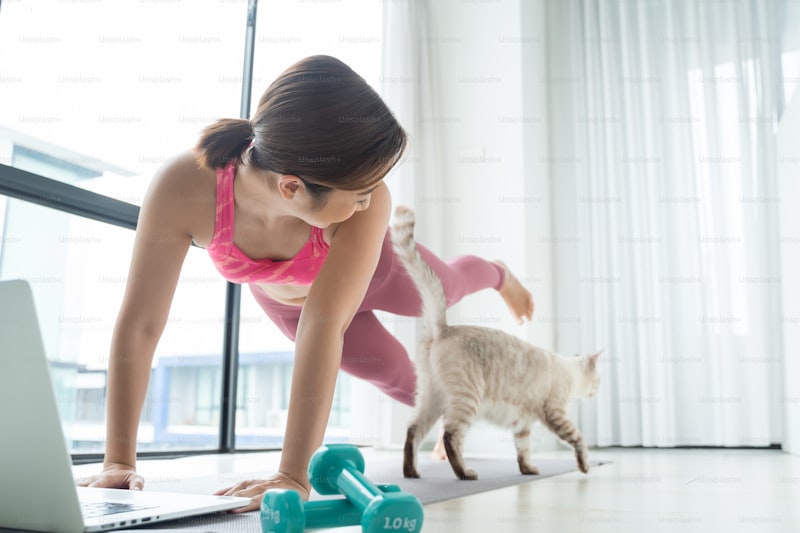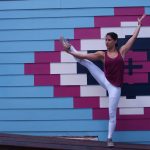2020 has not been the easiest.
The world has had to adjust to loss, lockdowns, restrictions, kids at home, job losses, and a whole pile of not-nice things.
But one thing that many people say has got them through this year is their pets. Dog and cats don’t care if we’re in lockdown or not. They just need to be fed, walked and stroked and all is right in their world.
So how can we learn from our canine and feline friends, and take on this great attitude when it comes to our yoga practice?
Dog-Inspired Yoga Poses
As we know there are two fundamental yoga poses that are named after dogs – downward dog (adho mukha svanasana) and upward-facing dog (urdhva mukha svansana). These two poses are at the heart of many people’s yoga practices, acting as the bridge between poses in Ashtanga yoga or Vinyasa flow-style yoga.
Downward dog is a symmetrical, full-body pose. It stretches the legs and the back, works the arms and shoulders, and acts as an inversion for the brain.
Upward-facing dog is the inverted version of downward dog and is a strong backbend, with the weight of the body resting on the hands and feet.
What Dogs can Teach Us in Downward Dog
When our dogs do the pose that looks like downward dog with their front paws out, chest down and waggling rear end in the air, it tends to mean that they are getting ready to play.
So, inspired by our canine friends, let’s think about downward dog as the gateway to our yoga play. We could even ‘wag our tails’ (also known as walking it out) by moving the hips from side to side to release tight hips and gradually extend the hamstrings.
There is also an intense energy in this pose when dogs do it. Try to channel this ‘about to spring into action’ energy in your downward dog, rather than allowing the weight to rest heavily onto the wrists and the calves.
What Dogs can Teach Us in Upward Dog
When dogs come into upward facing dog it tends to be to stretch out after a nap. This is a hard-wired instinct in order to activate their muscles and be ready to move quickly if they need to.
This pose can be tough for those who have lower back pain so, channeling a waking dog, think about gradually bringing the pelvis forwards in a gentle way, rather than forcing the back to bend.
Cat-Inspired Yoga Poses
Cat pose (marjariasana) tends to be done in partnership with cow pose (bitilasana) – cat/cow pose, although sometimes both poses are called cat pose.
This pose starts from being on all fours and involves stretching the spine in a convex shape, with the shoulders over the wrists, head drawn down and in and the tailbone drawn in.
The partner pose (sometimes called cow pose) is the inversion of this pose, with the spine drawn down in a concave shape, tailbone lifted and chest lifted.
What Cats can Teach us in Cat Pose
The cat pose is based on the extremely arched spine of cats which they do for two reasons. The first is if they’re scared, in which case they’ll also bare their teeth or hiss. The second is when they’re feeling playful and as an invitation to play.
Focusing on the second reason (although this year you might want to try doing it with your teeth bared when you’ve had enough), treat cat pose as a way to play – through the movement of your spine. This pose massages the digestive organs and strengthens the spine, so start the undulating movement gradually and then start to speed it up, or start with micro-movements and then see if you can increase the range of movement.
This pose is a great one to do when you’ve been working from home and need to stretch out the spine.
Dogs and Cats Seem to Love Yoga Too
For many yoga teachers, it’s been quite a privilege teaching on Zoom this year, getting to know not only our students but their pets too. Both cats and dogs seem to be drawn to their owners doing yoga, with mixed results!
One of my student’s dogs is a devoted yoga companion, and he comes in to sit faithfully by her whenever he sees her getting out her yoga mat. Some cats weave themselves around their owner’s legs while in tree pose, adding to the challenge! Another curled itself up on her owner’s chest and gently prodded her on the chin while she was in a restorative pose.
There has been evidence to show that pets can actually benefit from their owner’s yoga practice. As the rhythm of their human’s breath slows, the pet’s breath slows too, enabling them to relax. Whether the same benefits go both ways might be down to the individual!
What Dogs and Cats Can Teach us about Yoga
The dog lives for the day, the hour, even the moment. Robert Falcon Scott, Explorer
Dog owners will know that dogs live in the moment. It doesn’t matter if you go out for five minutes or five hours, the rapturous welcome you’ll receive from your dog will be the same.
Let’s channel this ability to be in the moment by approaching our yoga practice with the same joyful enthusiasm. It doesn’t matter if we’ve done the same practice the day before (and the day before that), let’s act as if it’s the first time and savour each moment.
On the other hand, cats have an unerring ability to get what they want. What is it that you really want from your yoga practice today? If we blankly go through the moves, we won’t reap the full benefits of yoga. By approaching your yoga practice with a single-minded goal you’ll find that you’ll come out of your practice with a feeling of deep satisfaction.












